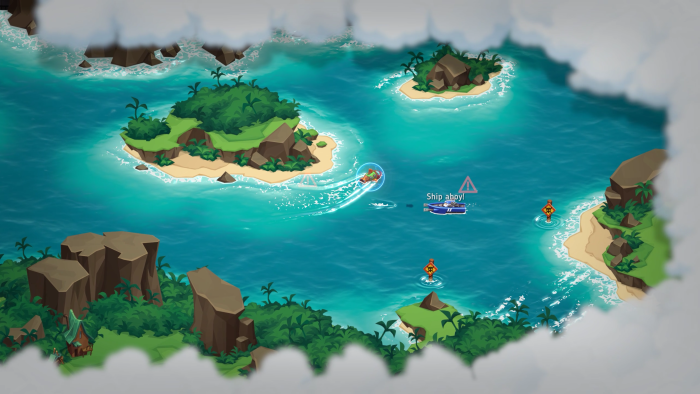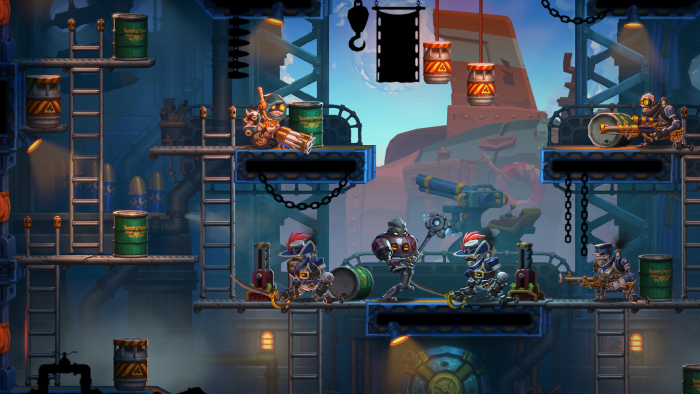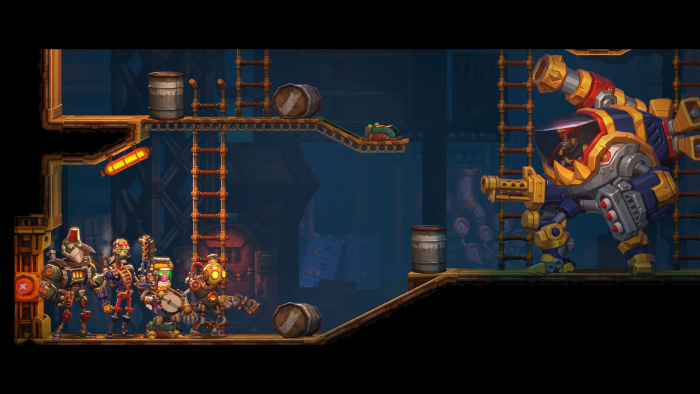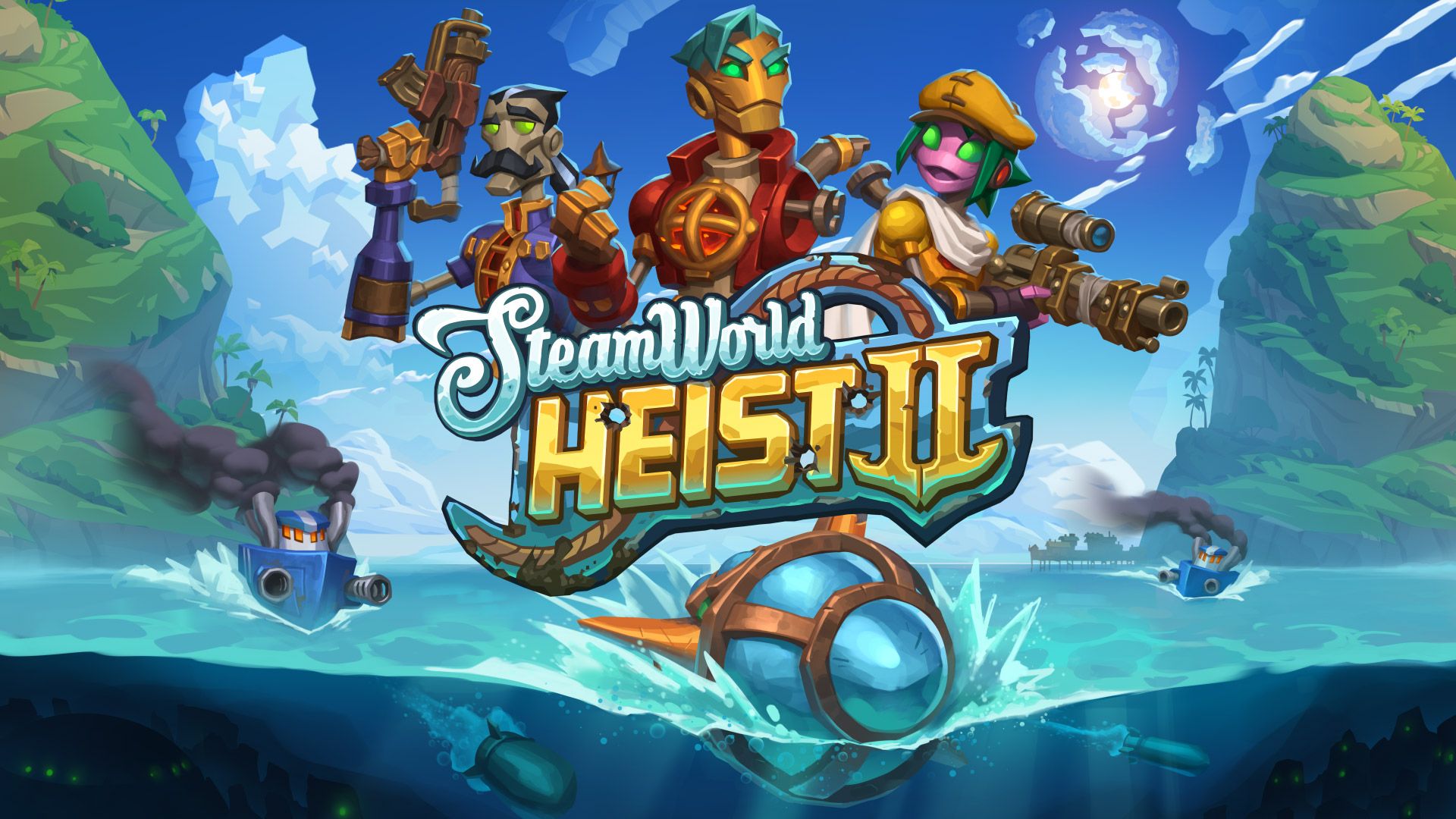The 2D tactical series takes to the open seas in its upcoming sequel
Being an “Enjoyer of SteamWorld” is an easy thing to do. The IP is vibrant, and the developers have been able to stretch it to near-Mario levels of variety. Heck, I’m sure that someone in a staff meeting has mentioned SteamWorld Kart by now. Regardless of the constant flow of new ideas the team tends to go back for second rounds, often refining the heck of out an initial idea in an attempt to adjust, fix and improve a concept. They did this with SteamWorld Dig 2, which is glorious, and now want to try it with Heist. Suffice it to say, after my recent time with their latest demo at Summer Game Fest I’m starting to think they may have succeeded again.
The developers of SteamWorld Heist II were happy with the original game, but also knew that there were areas that, looking back, had they done it again they might have wanted to do differently. The approachable nature of the original game was welcomed by players who weren’t experts to the tactical genre, but it didn’t necessarily have the depth of challenge or substance that veterans really look for and felt a bit rigid in how the characters developed. So, a lot of tactical depth and customization was crucial, expanding from just pushing a character up a linear level path towards something that really feels like freedom in builds.
That ends up being a running theme during the conversation between myself and the dev team as I play the demo. It’s been important to the team that the game reflects that, from the character development to even the way that the game world opens up and provides more freedom overall. And because of all of that, the game not only feels deeper but also surprisingly more accessible — it’s not about grinding one path, but about expanding the way we approach any situation in the game.
SteamWorld Heist II eschews the original’s space theme to take place on an oceanic world filled with pirates, robots, and pirate robots. Think “Pirates of the Caribbean” with less Jonny Depp and more mechanical people. One thing that’s noticeable right away is the mission structure. No longer is the game moving along a set path on a map, point to point. Now, between missions we can take the helm of our ship and explore the full ocean in real time, finding treasure and engaging in seafaring ship battles. When it’s time to take on a tactical mission we dock our ship at a mission point and go forth. These could be specific to our story or sidequests, or they could just be points that we pass on the way to our missions that seem interesting enough to check out. This ship exploration aspect becomes a whole game mode in and of itself. During my demo I’m supposed to head towards an enemy camp, but along the way I’m attacked by a pirate ship. I have to fight back, and depending on how I’ve upgraded my ship I have different types of weapons and defenses at my disposal. Do I turn my ship and take them on from the side, or do I go head on? Or, do I try to escape? Indicators on our ship’s aim, turning either white or red, will let us know if we’re going to hit or be hit. Weapons also have a cooldown, so we need to rotate our tools to know what’s available to us and what isn’t. Eventually the battles will dip below the water level, as our ship/sub navigates even more areas below. There are a huge amount of islands and landmarks and secrets on the map that we can see, alongside a fog of war that hides the edges. It may be one big ocean, but it’s also an interconnected world with unique biomes and different types of stories and characters, so we’re not going to just see the same blue water and palm trees the entire trip through.

The world of SteamWorld Heist II is huge, and the characters that we choose to accompany us can have an effect on the cut scenes and story progression as well. There’s even a reputation system, so that some areas may be a bit off limits for us at first until we build up our standing with the different factions within them. It’s a way to keep the game open and yet task us with interacting with everyone and everything.
Though the world exploration is a welcome change, the extension of the open-ended design to the characters and battles is what really sets this game apart from its predecessor. It’s a substantial set of what can be described in simple terms as Quality of Life improvements but they drastically change how we approach the game. Now, instead of that linear set of hero paths we’re juggling and adjusting and improving and shifting, constantly, based on the situations we come across. In an opening battle in the demo I’m given two characters to control. The gameplay is that familiar 2D plane that the first game perfected but now there is a lot more of a sort of platforming aspect; we have to move around, a lot, climbing up and down, positioning ourselves accurately, and moving and exploring. It’s not just a singular path, but an open-ended battle, so to speak. Just in the opening battle alone I have to take out smaller enemies, climb around to beat a sort of mid-boss, and then rescue another teammate. It’s a lot of tasks, and a lot of depth, for each mission, and it’s meant to insure that the battles don’t get repetitive or predictable.

One of the characters on my team is named Wesleyan Crowbar is specified as a Reaper job and packs an SMG, and has a kill shot ability active in which taking out one enemy allows him to get an extra offensive action in. In the second battle I take on in the demo, I can draft him to the team but now with a war hammer in tow; he’s now configured as a brawler, which is a melee job. But he also has access to some of the Reaper abilities I’ve unlocked, selectable based on preference in between missions. There are six jobs in all, and each have varied active and passive abilities that can be selected based on how many cogs we have available to us at the time, so we can gravitate towards one job or mix & match, and maybe even learn to stack them for some combo effects (though the developers didn’t want to give anything away).
A big part of the game is about how we level up the characters and what kinds of builds we want, and during my second battle is where I get to explore this. My Wesleyan Crowbar now has some Reaper and Boomer class abilities selected, and he’s ready to rock. As I take out enemy after enemy, I learn that I can blow up exploding barrels with his rocket launcher (Boomer) or get up close to knock them out with my hammer (Brawler). I have an ability active that regenerates a little health when I get a melee kill, so as this sort of tank character I may not have a lot of good long distance aim but I can offset that by getting close and dealing major damage without feeling like I’m going to walk into a trap. This battle also has a timer and I need to get in, take out a specific enemy, and get out before things go boom. But there’s some risk/reward here, too; I can get the hell out of there, or I can hunt down the treasure chests that are scattered throughout the level, potentially grabbing some serious loot. But if time runs out then it was all for naught, so I need to plan ahead. In the end I manage to grab two of the chests, since my team members were nearest to those already, and head for the escape. The missions will often have bonus objectives, adding yet another layer to the gameplay that could have us coming back for replays and perfecting runs.

To gauge how impressed I was with the game, I’ll note that my demo of SteamWorld Heist II was scheduled for 30 minutes but I hung around and played for over an hour and a half. The developers kept allowing me to play mission after mission, as the easiest way to explain the improvements to the game was to just play it. And play it I did. Over and over again. I think I got in somewhere between 4-5 battles, and by my session only ended because I had another appointment scheduled — or else I might still be there now, draining the hours away on the open robotic sea.
SteamWorld Heist II arrives on August 8th for every platform. Preorders are available now, with more information on the SteamWorld Heist II home page.



No Comments